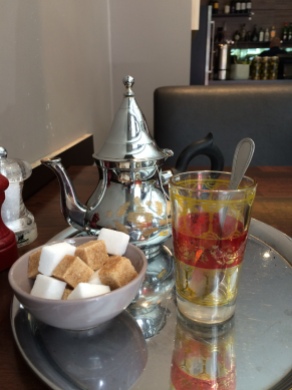 Amsterdam’s Portuguese Esnoga (Synagogue) was inaugurated on Shabbat Nahamu, August, 1675. Four men contributed the largest amounts towards the Esnoga’s construction. Among them was Isaac de Pinto. He was born in Antwerp in 1629 where his family lived as New Christians after leaving Portugal. While Antwerp was still under Spanish rule, the Inquisition was far less active there. In 1646 they moved to Rotterdam and began to openly practice Judaism. Shortly thereafter they moved to Amsterdam. In 1671 de Pinto wrote a family history tracing his family’s journey from Portugal and back to Judaism.
Amsterdam’s Portuguese Esnoga (Synagogue) was inaugurated on Shabbat Nahamu, August, 1675. Four men contributed the largest amounts towards the Esnoga’s construction. Among them was Isaac de Pinto. He was born in Antwerp in 1629 where his family lived as New Christians after leaving Portugal. While Antwerp was still under Spanish rule, the Inquisition was far less active there. In 1646 they moved to Rotterdam and began to openly practice Judaism. Shortly thereafter they moved to Amsterdam. In 1671 de Pinto wrote a family history tracing his family’s journey from Portugal and back to Judaism.
To celebrate the anniversary Rabbi Peres, Shamash Nabbaro, and I decided to visit Antwerp to retrace the Pinto route which culminated in the construction of the mighty Esnoga (and to enjoy Antwerp’s excellent kosher cuisine!). As the ‘Jews’ of Antwerp lived as conversos, there is nothing Jewish from the sixteenth and seventeenth centuries to be seen. Though, Antwerp was, as you’d expect, a port city.
There is, however, a nineteenth century Portuguese synagogue, seemingly related to the French Portuguese rite. Rabbi Peres pointed out that the two-tablet design atop the building is similar to what is found on the other French Portuguese synagogues that I recently visited in southern France. Antwerp’s language is Flemish and the culture of the city is a mix between French and Dutch.

Antwerp’s Portuguese Synagogue
Antwerp and the area beyond its northern border with the Netherlands is historically Roman Catholic. However, the area north of the Rhine river broke off from Spanish rule in 1581 and became Protestant. Rotterdam is the first city beyond that point. It therefore became an early Portuguese Jewish community, and was home to the de Pintos for a few years before they eventually made their way to Amsterdam. The Pinto home in Amsterdam with its impressive facade can still be visited, though I’m told that there isn’t much to see inside.
The Portuguese Jews were drawn to Amsterdam for its religious freedom and for its growing maritime commercial prowess. I therefore visited the Amsterdam Maritime museum (loved it!) and the Tropenmuseum which explores the Netherland’s colonial past. Surprisingly, neither museum mentions the important role that Jews played in Dutch commerce or in her colonies. Portuguese Jews played a pivotal economic role in the Dutch Golden Age, especially in comparison to the less crucial impact that they made in the British Empire’ development.
I thoroughly enjoyed my visit to Amsterdam to celebrate the anniversary of the Esnoga. As we retraced the route from ‘Escape to Esnoga’ I felt the latent potential of generations of conversos. So great was their energy that it burst forth into a building of such significance that it lasts until this day. May it continue to be a place of inspiration and meaning for many many years to come!

Plaque Commemorating the Esnoga’s Inauguration in 1675










Rabbi Morris, I was delighted to read about your trip to Amsterdam. When I could no longer go to school in Germany I was sent to Amsterdam to the Orphanage next to Spanish and Portuguese Synagogue. Every Shabbos we would go there. Sorry to tell you that we were one hundred and four girls in the orphanage plus the staff. After the war we found out that one hundred girls didn’t survive plus the entire staff. Only four of us were fortunate to be alive. At times when I think about the girls and staff it is hard to believe what happened. My husband and I were fortunate to go back and visit the home and synagogue. If you ever go back contact Janet and she will be glad to tell you to go to the museum next to the Synagogue and there you can see some of the articles we donated to the museum. Thank you again for sharing your trip to Amsterdam with us. We will never forget the girls and staff. Marge Kirchheimer
Dear Marge, thank you for sharing such a profoundly personal and sad memory. I was deeply moved reading it. The shadow of the holocaust remains in Amsterdam to an extent that I haven’t felt elsewhere. It’s one of the few places where survivors returned, making the absence of neighbors and friends all the more apparent to them. I’m grateful that you wrote this reflection. Hopefully others will read it and also never forget. Warmly, Shalom
What a sad, profound and beautiful story. Thank you for sharing so I can keep your friends and staff who perished in my thoughts and remember them.
Dear Rabbi,
All these posts are fascinating, but did you receive the article I sent you about the Péreire bankers from Bordeaux ? I sent it to Bevis Marks.If you did not, I have other copies and I could leave them for you perhaps at Lauderdale Road, which is near to me.
What is the status of your PhD. enrolment ?
Kind regards,
Michael Alpert
Dear Michael
Thank you. Yes I did receive it. I sent you a digital note a few weeks ago. Sorry if it didn’t come through to you! Very much appreciated. I’ll keep you posted when I have updates 🙂
Best
Shalom
The plaque is written in Portuguese 😉
Yes indeed. That was the language that they spoke at the time!